Defense & Security
ELECTIONS IN EUROPE

Image Source : Stutterstock
Subscribe to our weekly newsletters for free
If you want to subscribe to World & New World Newsletter, please enter
your e-mail
Defense & Security

Image Source : Stutterstock
First Published in: Jun.22,2023
Jul.25, 2023
In view of the early elections in Spain, it seems appropriate to review the political situation in Europe through a series of analyses that will cover the current health of political formations and movements, strategies and conditioning circumstances. I will begin this week with a transversal aspect: participation/abstention.
Before proceeding to the presentation of the data and the consequent analysis, it is convenient to make a series of methodological considerations and some clarifications.
I have established two geopolitical reference areas:
-the first, by proximity and common legal-political framework, the European Union (27 countries);
-the next is made up of three countries outside the EU but members of EFTA (Norway, Iceland and Switzerland) and, of course, the United Kingdom, which until just a couple of years ago was part of the Brussels club. All of them have economic, cultural and even military ties with the EU (except Switzerland).
I leave out the Balkan states aspiring to join the EU (Serbia, Montenegro, North Macedonia, Albania, Bosnia-Herzegovina and Kosovo) and those belonging to the former USSR, because their political reality is very different. In any case, their participation data are similar to those of the ex-communist countries of the EU.
In order to make comparisons, I have considered in the first instance the turnout rates of the most recent election in each state. But to provide a broader perspective, I will also refer to developments since 1990, when liberal democracies were established in the former communist countries (the ex-Soviet Baltic states, the central-eastern satellite countries of Moscow and the two former Yugoslav republics).
I will focus on general elections, which not only establish parliamentary majorities, but also prefigure the respective governments.
But the case of France is particular. As it is a presidential Republic (established in the 1958 Constitution), the head of State is also the head of the Executive and, among other powers, appoints the Prime Minister.
In 2022, the difference between the turnout in the presidential and legislative elections was over 26 percentage points, the highest gap in the current political system. The most obvious cause, but not the only one, is the overloaded calendar. In recent years, the two elections have been held consecutively with a span of barely two months. Moreover, in both cases there are two rounds of elections, which allows us to think of the "fatigue effect".
For governance purposes, the presidential elections are the most influential in defining the political course of the country, which is why they will have priority in the analysis. In any case, in order to be more rigorous, I will take into account the participation in the legislative elections.
I must also recall that in five of the countries followed, voting is nominally compulsory, although it is a formality of relative practical importance. These are Luxembourg, Belgium, Greece, Cyprus and Bulgaria. Failure to comply with this civic obligation is punishable by fines and, in some cases, minor prison sentences. It may be thought that this distorts the participation figures. But, in reality, the regulation has little practical effect, at least in the Mediterranean countries, let alone in Bulgaria, which has the second highest abstention rate. In Western countries, a certain bias in electoral behavior must be taken into account and should be noted.
On the other hand, another factor that, a priori, could have had a negative impact on electoral participation was the pandemic. However, I have compared the results of the elections held during the health emergency with the previous ones and we have not observed a general downward trend. With one exception, Romania, where abstention increased by almost eight points. But this must be attributed more to the deterioration of the political system than to the deterrent effect of COVID-19.
The first thing that stands out in the review of the data is the wide gap existing between the countries with the highest and the lowest participation. Even if we exclude the first two because of the formal compulsory nature of voting (Luxembourg and Belgium), the gap between them is about forty percentage points. For purely indicative purposes, I have extracted the average voting in the most recent elections in each country under study (considering the presidential elections in France for the above-mentioned reasons). The figure is 68.05%.
The other distinguishable element is the geographic proximity of the states according to their turnout levels.

Of the twelve countries that exceeded the European average turnout in the most recent elections, six belong to the West-Atlantic zone, five to the Nordic zone (i.e. all of them), only one to the South (Malta) and two to the East-Central zone (Slovenia and Hungary).
But if we raise the bar just one point above 70%, all the states that exceeded it were in the West-Atlantic or Nordic zones. The exception is obviously Malta, a very small country with a population of less than 400,000 inhabitants (like any populous district of a large European city) and an electoral system that favors a two-party system. High turnout is common in small political entities.
On the other hand, the 17 countries with turnout equal to or less than 71% are located in the other two differentiated zones: central-eastern and southern.
This geographical selection is also observed if we introduce into the analysis the electoral evolution since 1990.
The pronounced drop in turnout in the central-eastern countries is very relevant. We divide this block of countries into three graphs for the sake of clarity.
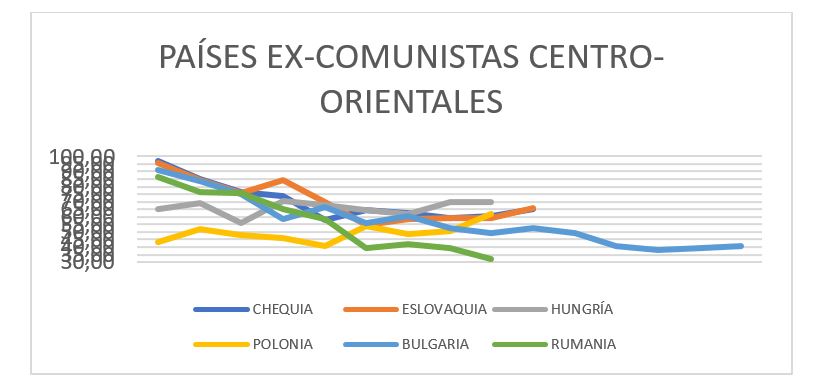
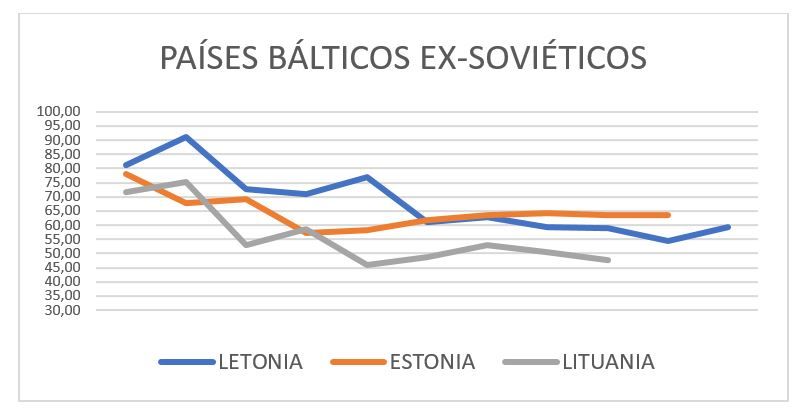
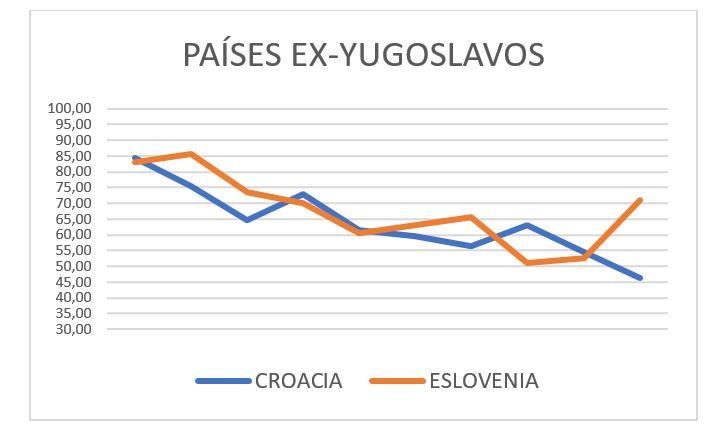
The political enthusiasm after the collapse of the communist regimes, expressed in turnout rates above 80% in the first years of democracy, has been extinguished. The average for the period does not reach 63% and that of the most recent elections does not even reach half of the electorate. Three decades after its incorporation into the liberal order, it does not seem that its citizens have been satisfied with electoral democracy.
The same downward trend is observed in the southern countries. With the exception of the aforementioned Maltese exception, since the early 1990s the decline has been enormous: 27 points in Cyprus, 24 in Italy, 20 in Greece, 16 in Portugal (which is now at the bottom of the list of southern Europeans) and 10 in Spain.
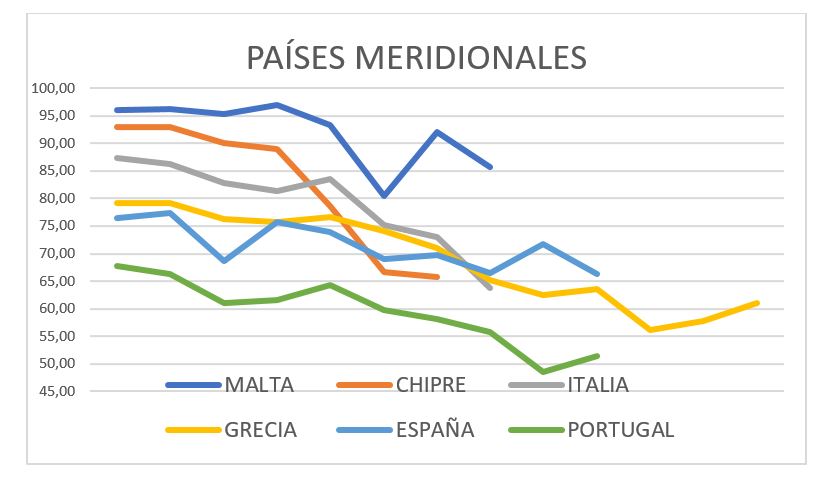
In contrast, participation has remained at a generally stable and high level in the Nordic countries. It has declined very slightly in Sweden and somewhat more in Iceland, the country that suffered, along with Greece, the most frightening episode of the financial crisis of the past decade in Europe. In contrast, in the other three countries (Denmark, Finland and Norway) participation has increased over this period.
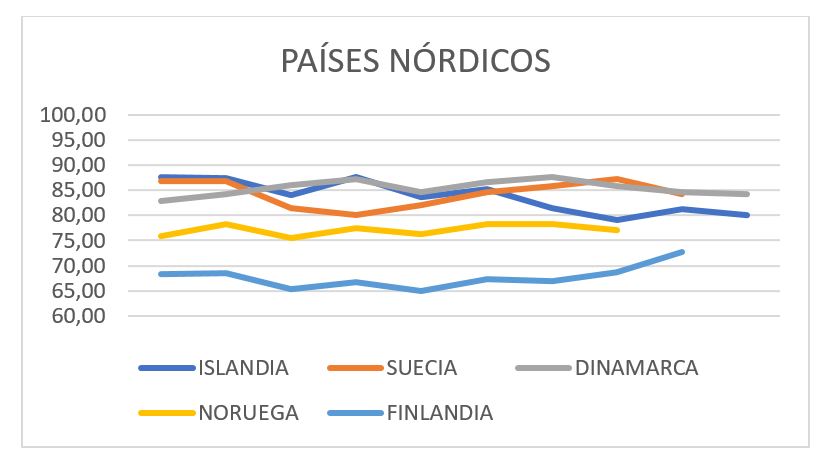
In the western countries, turnout has remained at levels slightly below the Nordic average, but in any case, it has been stable and high, above 75%. France narrowly missed this level in the presidential elections and suffered a very sharp decline in the legislative elections. The figures were somewhat lower in the Anglo-Saxon countries, slightly in Ireland (2.5 points) and more notable in the United Kingdom, with a loss of 10 points.
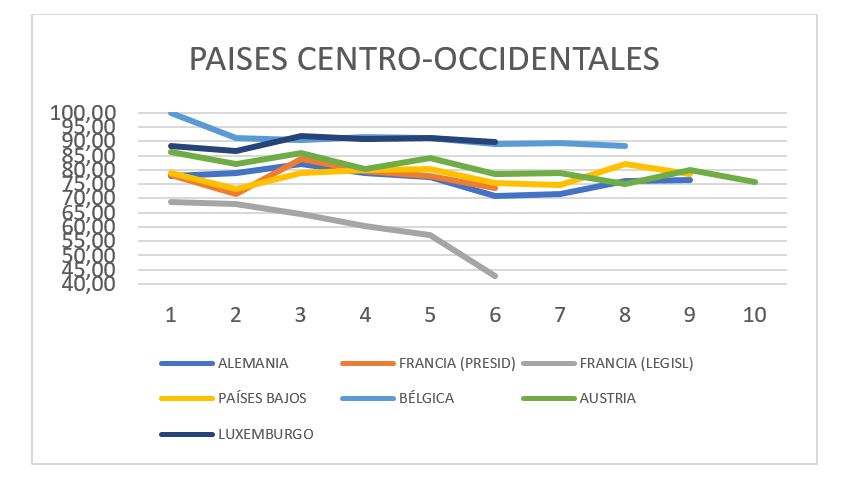
There is a lot of research, work and also speculation and self-interested manipulation about the reasons for voting or not voting. I recommend the work of the IDEA Institute, Stockholm, which makes a very detailed follow-up of voting behavior around the world (https://www.idea.int).
IDEA points out 16 factors that can influence participation, grouped in four blocks:
- socio-economic (demographic dimension, population stability, economic development).
- political (uncertainty about the electoral outcome, perception of the consequences of the elections, intensity of the campaigns, political fragmentation).
- institutional (electoral system, whether or not voting is compulsory, concurrence of elections, ease or difficulty of voting, complexity of electoral procedures).
- individual (age, education, political interest, civic awareness).
For this paper, I have selected three indicators that can be relatively measurable and that, in some cases, combine the factors proposed by IDEA. They are the following: democratic health, relative economic potential of each country and social development.
As a foundation for the strength of the formal democratic system, advocates of the liberal state cite strong institutions, clear rules of governance, low levels of corruption and sustained respect for the rules of the rule of law. One of the most commonly used indexes to measure these behaviors is that prepared by Transparency International. Certainly, this ranking presents an even picture of electoral participation.
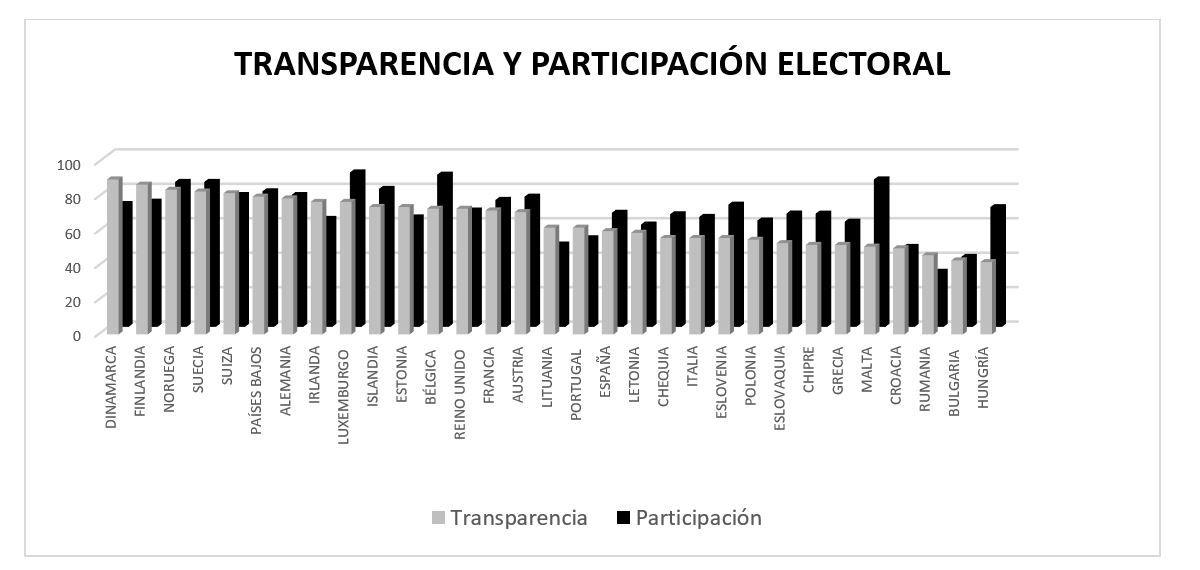
Denmark and the Scandinavian countries are in the lead, followed by the Western-Atlantic countries, including Ireland, where, on the other hand, voting is slightly lower than in the other countries in their area.
On the other hand, the Mediterranean and Central-Eastern countries have lower transparency indexes, coinciding with their poorer voter turnout rates. Hungary under the ultra-nationalist Orbán stands out, whose negative score in transparency significantly worsens its result in electoral participation.
There are two dissonant cases. The first is very striking. Estonia presents a very high transparency index in relation to electoral participation. Its small territorial dimension (45,000 km2) and its small population (1.3 million) only partly explain its specificity. The second is again Malta, which is in fifth place at the bottom despite its high turnout, which reinforces its exceptionality.
In my perception, the factors that most decisively determine the level of participation are those of an economic and social nature. We observe, in fact, that, in general, the subgroups established by geographic criteria are consolidated and reinforced under this other angle of consideration.
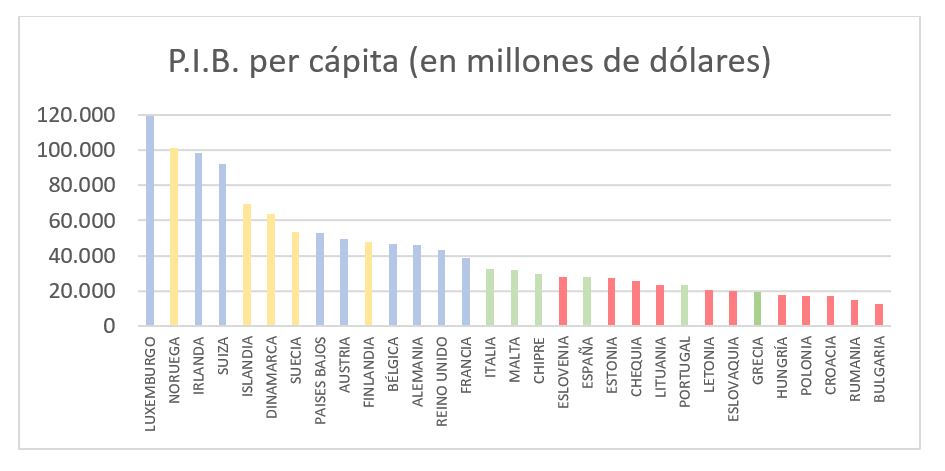
The countries with the highest HDI are the Western-Atlantic and Nordic countries, which have the lowest abstention rates. It is a circumstance, probably not by chance, that the two countries in the central-eastern and southern zone with the highest percentage of citizen voting (Slovenia and Malta) are those with the highest HDI in their respective zones.
Here it is necessary to highlight two deviations with respect to electoral participation. Switzerland has the highest HDI in the world, despite its pronounced electoral abstention. And the United Kingdom, which surpasses Slovakia and Malta in human development, lags behind them in voter turnout.
However, other benchmark indices modify this fixed picture of social development in Europe somewhat. Specifically, I am referring to the index of poverty and risk of social exclusion that has just been updated by the European Union, hence it only includes member countries.
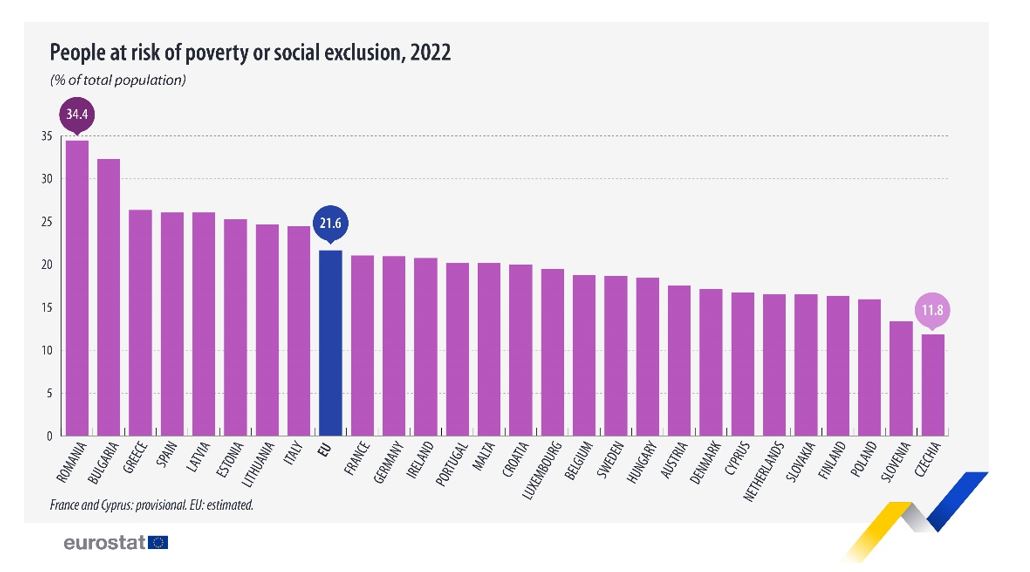
The scale is composed in the opposite direction of the previous graphs. We observe that, contrary to the HDI, the countries with the worst results are not the same as those with low electoral participation, except for Romania and Bulgaria. Spain or Greece appear here in the worst positions, while the position of Portugal and Cyprus improves. The cases of France and Germany (in medium-low positions) or, on the contrary, of the Central European countries, which occupy the lowest risk of exclusion, are also striking. This is undoubtedly due to the effect of immigration. Immigrant populations are those who suffer the highest risk of exclusion and it is a group that, for the most part, does not have the right to vote; therefore, it does not increase the abstention rate.
It is considered certain that a low level of participation, or a high level of abstention, generally favors the parties of the center-right spectrum. This consideration is supported by the generally more critical and nonconformist character of the left-wing electorate. From the conservative and liberal sectors, this and other traditional manifestations of the left are combated as part of the "cultural war" waged in the political arena.
To better support the debate, we should review the data from the most recent elections held in each country.
In the countries that registered an above-average turnout (68.05%) in the most recent elections, the most voted political options were the following:
- Social Democrat: 6 (Belgium, Malta, Sweden, Germany, Finland and Denmark).
- Liberal: 2 (Luxembourg and French presidential elections)
- Conservative: 1 (Netherlands).
- Conservative or identitarian nationalists: 1 (Hungary).
As turnout decreases, the number of center-right or far-right political options that receive the most votes increases. In fact, below the average, only the socialists in Portugal and the left-wing nationalists (Sinn Feinn) in Ireland voted first. In the rest, conservative (5), conservative nationalist or identitarian (2) or liberal (1) parties won.
On the other hand, if we take as a reference the average index for the entire period studied, we find that the center-left has not always won in the elections with the highest turnout. On the contrary, the center-right parties have won on twelve occasions, the social democrats on six, the liberals on five and the conservative nationalists on two. Even the now defunct communist parties triumphed in the early 1990s with very high participation rates.
First published in :

Graduate in Journalism and Contemporary History. Specialized in International Information throughout his professional career of more than thirty years in Public Radio and Television. He is currently retired from RTVE and collaborates with Fundación Sistema and several digital publications, with analysis on international current affairs. Professor in the Master's Degree in International Relations and Communication at the Complutense University of Madrid (2000-2012), until its disappearance. Lecturer at several summer universities on international affairs. He has published a novel related to the war in Yugoslavia, entitled "After the end" (2012).
Unlock articles by signing up or logging in.
Become a member for unrestricted reading!